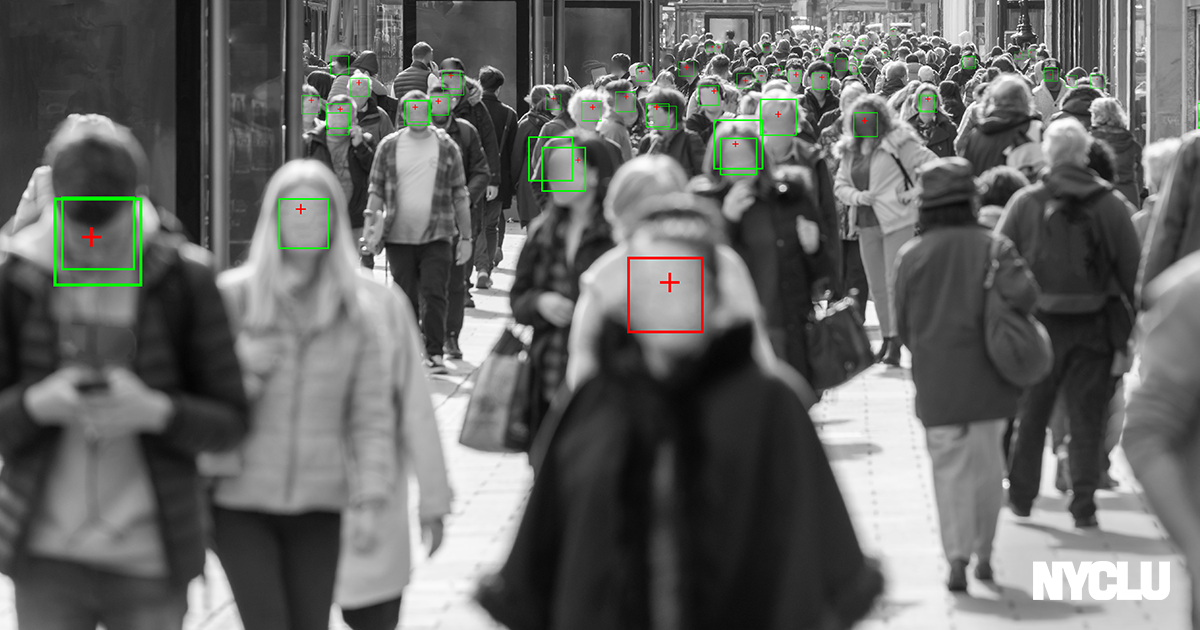The NYPD Published Its Arsenal of Surveillance Tech. Here’s What We Learned

Last year the New York City Council passed the Public Oversight of Surveillance Technology (POST) Act, designed to shed light on the growing number of mass surveillance devices that the NYPD uses to spy on New Yorkers.
The law’s mandate is simple: the NYPD must disclose the technology tools it currently possesses – and going forward, tech that it plans to acquire – along with the policies that govern their use. What the NYPD produced in response was a vague and misleading attempt to continue to hide its efforts to snoop on the public.
When the POST Act was first introduced in 2017, the NYPD assured the public that the legislation was unnecessary and that the department could be trusted to self-monitor its use of mass surveillance technology. The department, resorting to its usual fearmongering tactics, also insisted that the legislation would help terrorists plot their attacks.
This was always untrue and time has only further confirmed the need for the transparency mandated under the POST Act. The NYPD’s possession and deployment of secret spying devices are a threat to the safety and privacy of all New Yorkers. And these technologies pose a unique risk to Black and Brown New Yorkers who the NYPD has subjected to dangerous, invasive policing tactics for decades.
With its full suite of surveillance tech, the NYPD operates as a quasi-military force that enjoys maximum discretion to deploy these spying devices as it sees fit.
The NYPD finally released information on what it claims is its full trove of surveillance technology to the public in January. This was supposed to provide a full picture of the department’s capacity to track and monitor New Yorkers, and provide a new baseline with which to evaluate the ways the NYPD surveils communities of color.
But what the NYPD published was a far cry from full transparency and meaningful disclosure. Despite the clear purpose of the POST Act in making once-secret technologies public, the information released by the NYPD seems designed to prevent New Yorkers from learning any new information about how the department operates.
With its full suite of surveillance tech, the NYPD operates as a quasi-military force that enjoys maximum discretion to deploy these spying devices as it sees fit.
The policies governing the use of these technologies lack any serious consideration of how surveillance technologies could fuel biased policing and disparate treatment.
In the NYPD’s eight-page policy for facial recognition, for example, there is only one sentence noting the reported inaccuracies associated with this technology, buried at the end of the report. But, repeated studies have shown facial recognition technology to be significantly less accurate when used on people of color, and the NYPD has been found to use the tech in unscientific and unlawful ways.
It’s also not clear from the documents what protections are in place on who the NYPD shares its massive data troves with and how long it keeps sensitive information in its clutches.
In general, the disclosures obscure the breadth, depth, and complexity of the NYPD’s surveillance, and in some instances even include misrepresentations and inaccurate statements. For example, the NYPD makes a number of claims certain technologies do not use artificial intelligence, machine learning, or video analytics. But in many of these cases, there is ample evidence to the contrary.
We already know the NYPD possesses and routinely deploys an arsenal of secret spying devices that include face surveillance, x-ray vans, Stingrays, ShotSpotter, and drones, among others. But we still don’t know how many of these technologies are used in coordination with each other. The redundant and general language in the use policies glosses over the fact that facial recognition software, for instance, can be used retroactively to analyze footage collected from the 20,000 CCTV cameras accessible to the department.
The information released by the NYPD also leaves us in the dark about the extent to which information about New Yorkers is being collected or shared among third-party providers. Without this information, it’s impossible to know what this sensitive data is being used for, how protected it is, and who is profiting from it.
When we know we’re being watched, we behave differently and we move through the world with less freedom. For people of color and members of communities who are historically surveilled by law enforcement, the scale and capability of the NYPD’s tech arsenal is a looming threat.
The POST Act was intended to provide the public with a powerful tool to begin checking the NYPD and calling out its abuses of power when they take place. But the information released by the department doesn’t shine much light on the worst harms of surveillance in New York City.
You can read the NYCLU’s detailed analysis of the NYPD’s preliminary disclosures below.
Editor’s note: On April 11 the NYPD released the final POST Act policies, responding to feedback from the public comment period. Disappointingly, the 36 draft policies were only minimally edited and remain largely the same as in the drafts we reviewed, failing to meaningfully incorporate comments, concerns, and criticism by the public. Each policy has a change log on the second page. The most consistent change throughout is the removal of the NYPD’s claim that no artificial intelligence or machine learning is used in respective technologies. In prior versions, this claim was included as a blanket statement in nearly every policy. The final policies contain no mention of artificial intelligence or machine learning, even for devices and technologies that have been previously reported to rely upon these methods.
